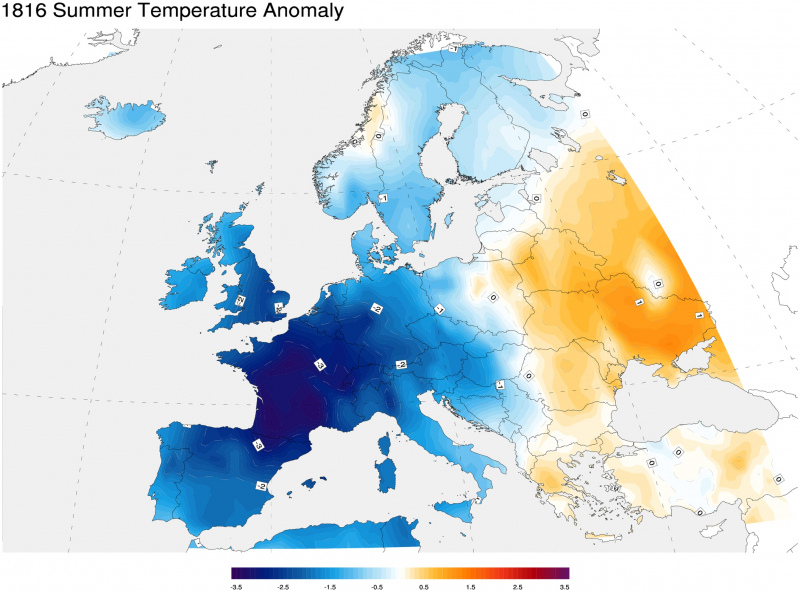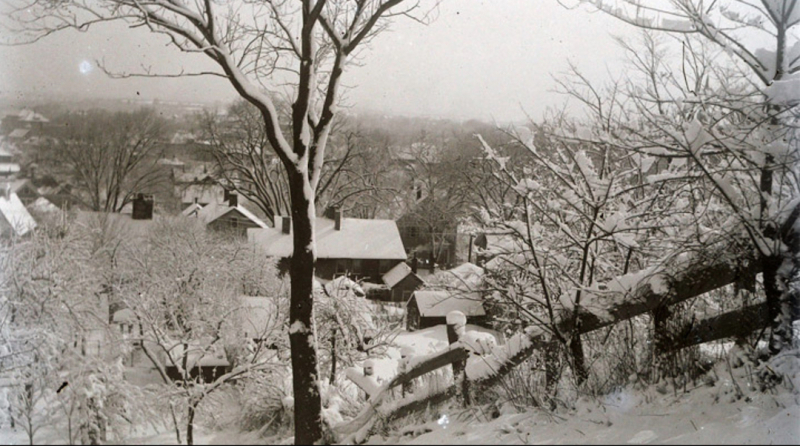The year 1816 is known as The Year Without a Summer
Because of severe climate anomalies that caused average global temperatures to drop by 0.4-0.7 °C (0.7-1 °F), the year 1826 is known as the Year Without a Summer. Summer temperatures in Europe were the coldest on record from 1766 to 2000. This resulted in severe food shortages throughout the Northern Hemisphere.
The evidence suggests that the anomaly was primarily a volcanic winter event caused by Mount Tambora's massive 1815 eruption in April in the Dutch East Indies known today as Indonesia. This eruption was the largest in at least 1,300 years (after the hypothesized eruption that caused the volcanic winter of 536), and it was possibly exacerbated by the 1814 eruption of Mayon in the Philippines.
Tephra levels in the atmosphere were high enough that a haze hung over the sky for a few years following the eruption, as well as vivid crimson hues in sunsets. Paintings from the years before and after the eruption of Mt. Tambora demonstrate that these vibrant reds did not exist prior to the eruption.
The Year Without a Summer was a farming disaster. According to historian John D. Post, this is the last serious subsistence crisis in the Western world. The 1816 climatic anomalies had the biggest impact on most of New England, Atlantic Canada, and sections of western Europe.
According to a 2012 study by Berkeley Earth Surface Temperature, the 1815 Tambora eruption caused a 1°C decline in the Earth's average land temperature. Temperature decreases were smaller during the 1812-1814 eruptions. The Earth had already been experiencing centuries of global cooling, which began in the 14th century. The Little Ice Age, as it is now known, had already caused significant agricultural misery throughout Europe. The existing freezing of the Little Ice Age was worsened by the Tambora eruption, which occurred at the conclusion of the Little Ice Age. This period also coincided with the Dalton Minimum (a period of low solar activity), notably Solar Cycle 6, which lasted from December 1810 to May 1823. May 1816 had the lowest sunspot number (0.1) ever recorded since records of solar activity began. During this time, the shortage of solar irradiance was worsened by atmospheric opacity caused by volcanic dust.










